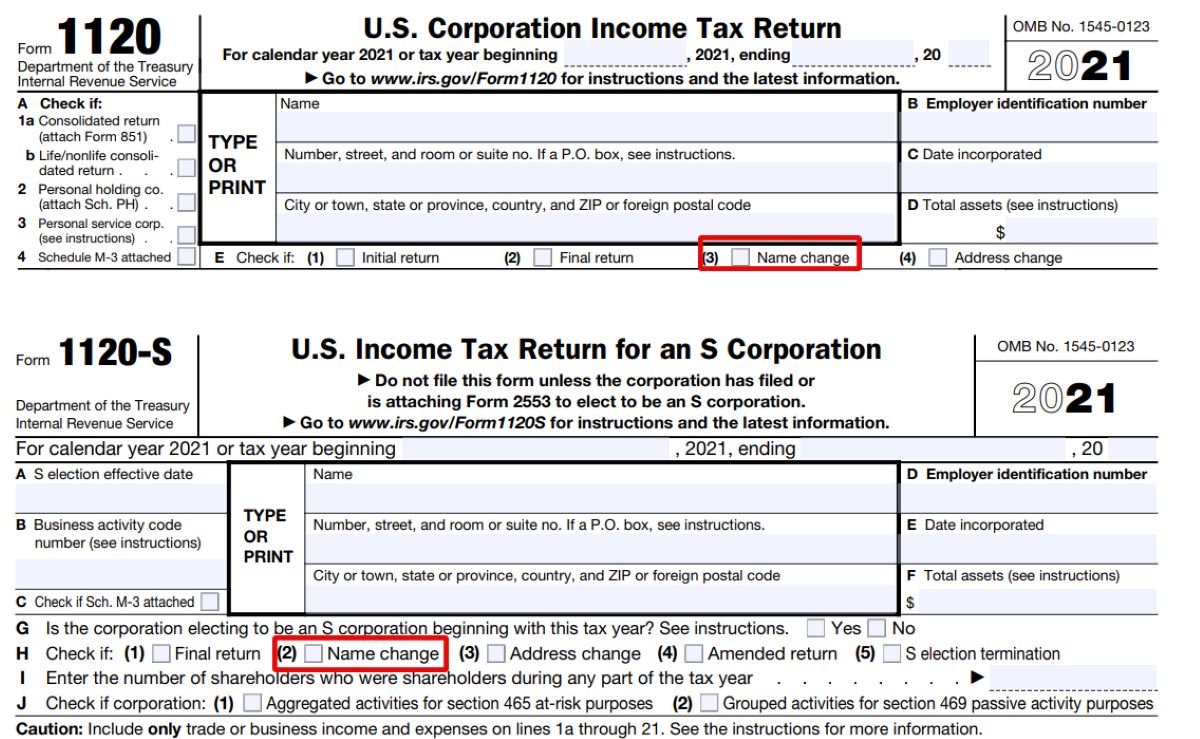

Finance
How To Find A Savings Bond In Your Name
Published: January 16, 2024
Looking for ways to manage your finances? Find out how to locate a savings bond in your name and start saving today with our simple guide.
(Many of the links in this article redirect to a specific reviewed product. Your purchase of these products through affiliate links helps to generate commission for LiveWell, at no extra cost. Learn more)
Table of Contents
- Introduction
- Understanding Savings Bonds
- Methods for Finding a Savings Bond in Your Name
- Option 1: Contacting the Original Purchase Institution
- Option 2: Utilizing the Treasury Hunt Tool
- Option 3: Contacting the U.S. Department of the Treasury
- Option 4: Seeking Assistance from a Financial Professional
- Important Considerations and Tips
- Conclusion
Introduction
Welcome to the world of savings bonds! Whether you inherited a savings bond from a relative, received one as a gift, or purchased one years ago and can’t quite remember where it is, this article will guide you on how to find a savings bond in your name.
Savings bonds are a popular investment option offered by the U.S. Department of the Treasury. They serve as a safe and secure way to invest and save money, making them a favorite amongst individuals looking for long-term financial stability. These bonds accrue interest over time and can be redeemed for their full face value plus interest when they reach maturity.
However, keeping track of savings bonds, especially if they were obtained many years ago, can prove to be a challenge. Institutions may have changed, records may have been lost or misplaced, and the process of locating a savings bond can seem daunting. But fear not, as there are several methods available to help you in your quest to find a savings bond in your name.
In this article, we will explore four options that can assist you in locating your savings bond. These options include contacting the original purchase institution, utilizing the Treasury Hunt tool, reaching out to the U.S. Department of the Treasury, or seeking assistance from a financial professional.
So, if you are ready to embark on this treasure hunt and discover the value of your savings bond, let’s dive right in!
Understanding Savings Bonds
Before we delve into the methods of finding a savings bond in your name, it’s important to have a solid understanding of what exactly a savings bond is. A savings bond is a type of government-issued security designed to help individuals save money while earning interest over time.
There are two main types of savings bonds issued by the U.S. Department of the Treasury: Series EE and Series I. Series EE bonds are purchased at a discounted face value and earn interest over a set period of time, typically 20 years. On the other hand, Series I bonds are inflation-indexed and provide protection against inflation.
One of the key advantages of investing in savings bonds is their low-risk nature. These bonds are backed by the U.S. government, which means they are considered one of the safest investment options available. Additionally, savings bonds offer a guaranteed return on investment, making them a reliable choice for individuals looking to grow their savings over the long term.
When you purchase a savings bond, it is important to keep track of its location and maturity date. While the process of finding a savings bond may vary depending on the circumstances, there are several methods you can employ to locate your bond and ensure you receive the full benefits of your investment.
Now that we have a solid understanding of savings bonds, let’s explore various methods to find a savings bond in your name.
Methods for Finding a Savings Bond in Your Name
When it comes to finding a savings bond in your name, there are several methods you can employ to track down this valuable asset. Let’s explore four options that can help you locate your savings bond:
- Contacting the Original Purchase Institution: The first step in finding your savings bond is to reach out to the financial institution where the bond was initially purchased. This could be a bank, credit union, or other financial institution. Contact their customer service department and provide them with any relevant information, such as the date of purchase, bond series, and your personal details. They should be able to assist you in locating your savings bond or provide guidance on the next steps to take.
- Utilizing the Treasury Hunt Tool: The U.S. Department of the Treasury provides a helpful online tool called Treasury Hunt, designed specifically to aid individuals in locating lost, matured, or unclaimed savings bonds. To use this tool, visit the official Treasury Hunt website and enter your personal information. The system will then search its database to see if there are any savings bonds associated with your name. If a match is found, you will be provided with instructions on how to claim your bond.
- Contacting the U.S. Department of the Treasury: If you are unable to locate your savings bond through the original purchase institution or the Treasury Hunt tool, reaching out directly to the U.S. Department of the Treasury is another option. You can contact the Bureau of the Fiscal Service through their website or call their customer service hotline. Provide them with as much information as possible, such as your full name, social security number, and approximate date of purchase. They will be able to assist you in locating your savings bond or provide further guidance.
- Seeking Assistance from a Financial Professional: If you’re having difficulty finding your savings bond on your own, seeking assistance from a financial professional can be a wise choice. Banks, financial advisors, and CPAs have experience in dealing with savings bonds and can guide you through the process of locating your bond. They have access to resources and tools that can help expedite the search and ensure that you don’t miss out on the benefits of your investment.
Each of these methods has its own advantages and considerations, so it’s important to choose the one that best suits your needs and circumstances. Remember that locating a savings bond may take some time and effort, but the potential rewards are worth it.
In the next sections, we will delve deeper into each of these methods to provide you with a comprehensive understanding of how to find a savings bond in your name.
Option 1: Contacting the Original Purchase Institution
If you know which financial institution you used to purchase your savings bond, contacting them directly is a logical first step in your quest to find your bond. Here’s how you can go about it:
- Gather the necessary information: Before reaching out to the original purchase institution, gather any relevant information about your savings bond. This may include the bond series (EE or I), the approximate date of purchase, and your personal details such as your full name and social security number.
- Contact customer service: Reach out to the customer service department of the financial institution where you initially purchased your savings bond. You can find their contact information on their website or by calling their main customer service hotline.
- Provide the necessary details: When speaking with a customer service representative, provide them with the information you have gathered. Give them the bond series, the approximate date of purchase, and any other details they may require. This will help them locate your savings bond in their system or guide you on the next steps to take.
- Fulfill any documentation requirements: The financial institution may require you to fill out specific forms or provide additional documentation to verify your identity and ownership of the savings bond. Follow their instructions carefully and promptly submit the required documents.
- Follow up: After reaching out to the original purchase institution, it’s important to follow up regularly to ensure that your request is being processed. Stay in touch with the customer service department and inquire about the progress of your search. Be patient, as it may take some time for them to retrieve the information you need.
By contacting the original purchase institution, you have a higher chance of locating your savings bond, as they should have records of your transaction. They can guide you through the process and provide valuable assistance in finding your bond.
However, keep in mind that if the financial institution has since changed ownership, merged with another company, or closed down, the process of locating your savings bond may become more complex. In such cases, you may need to explore alternative options, which we will discuss in the following sections.
Now that you know how to contact the original purchase institution, let’s move on to the next option: utilizing the Treasury Hunt tool.
Option 2: Utilizing the Treasury Hunt Tool
If you were unable to find your savings bond by contacting the original purchase institution, don’t worry. The U.S. Department of the Treasury offers a valuable tool called Treasury Hunt, which can help you locate lost, matured, or unclaimed savings bonds. Here’s how you can utilize this tool:
- Access the Treasury Hunt website: Visit the official Treasury Hunt website by navigating to treasurydirect.gov and selecting the “Treasury Hunt” option.
- Enter your personal information: On the Treasury Hunt webpage, you will be prompted to enter your personal details, such as your full name, social security number, and other requested information. This information is used to verify your identity and search the database for any associated savings bonds.
- Review the search results: Once you have submitted your information, the Treasury Hunt system will search its database to see if there are any savings bonds associated with your name. If a match is found, the search results will display the bond’s current status and provide instructions on how to claim it.
- Follow the instructions for claiming: If the search results yield a match, carefully review the instructions provided. They will outline the steps you need to take to claim your savings bond. Follow these instructions closely to ensure a smooth and successful process.
- Reach out to the Bureau of the Fiscal Service: If you encounter any issues or have any questions during the process, you can contact the Bureau of the Fiscal Service, which is responsible for maintaining the Treasury Hunt database. They can provide additional assistance and guide you through any challenges you may face.
Utilizing the Treasury Hunt tool can significantly simplify your search for a savings bond, especially if you are unsure of the exact financial institution where the bond was purchased. It allows you to conduct a comprehensive search across various institutions to locate your bond.
Keep in mind that the Treasury Hunt database may not include all savings bonds, especially those that are still active and haven’t reached maturity. If you don’t find any matches in the database, it’s possible that your savings bond is still active and accruing interest. In such cases, it’s recommended to explore other options, which we will discuss in the following sections.
Now that you’re familiar with how to utilize the Treasury Hunt tool, let’s explore the next option: contacting the U.S. Department of the Treasury directly.
Option 3: Contacting the U.S. Department of the Treasury
If you haven’t been successful in finding your savings bond by contacting the original purchase institution or utilizing the Treasury Hunt tool, reaching out directly to the U.S. Department of the Treasury is another viable option. Here’s how you can go about it:
- Visit the official U.S. Department of the Treasury website: Access the U.S. Department of the Treasury’s website by navigating to treasury.gov and explore the available resources and contact information.
- Provide your personal details: Look for the appropriate contact information or online form that allows you to submit your personal information. This may include your full name, social security number, approximate date of purchase, and any other relevant details.
- Explain your situation: In your communication with the U.S. Department of the Treasury, clearly explain your situation and the reason for reaching out. Specify that you are searching for a lost or misplaced savings bond and provide any available information that may help them in the search.
- Follow any instructions provided: If the U.S. Department of the Treasury finds any relevant information regarding your savings bond, they will provide you with instructions on how to proceed. This may involve submitting additional documentation or following a specific process to claim your bond.
- Patience and follow-up: Be patient throughout the process, as it may take some time for the U.S. Department of the Treasury to locate your savings bond. Regularly follow up on your inquiry and stay in touch to ensure that your request is being addressed and processed.
By contacting the U.S. Department of the Treasury, you are directly involving the organization responsible for managing savings bonds. They have access to comprehensive databases and resources that can aid in the search for your bond. Their expertise and guidance can help you navigate through any challenges you may encounter.
It’s important to note that the process of locating a savings bond through the U.S. Department of the Treasury may take time, especially if the bond was purchased a long time ago or if there are complications with the records. However, rest assured that their dedicated team is there to assist you in finding your savings bond.
Now that you know how to contact the U.S. Department of the Treasury, let’s explore the final option: seeking assistance from a financial professional.
Option 4: Seeking Assistance from a Financial Professional
If you’re having difficulty finding your savings bond on your own, seeking assistance from a financial professional can be a wise decision. These professionals have experience and expertise in handling various financial matters, including locating and managing savings bonds. Here’s how they can help:
- Research and expertise: Financial professionals, such as financial advisors, certified public accountants (CPAs), or bankers, have knowledge and access to resources that can aid in the search for your savings bond. They can utilize their expertise to navigate through various databases, reach out to relevant institutions, and gather the necessary information to locate your bond.
- Access to networks: Financial professionals often have well-established networks within the financial industry. They can leverage these connections to reach out to colleagues or contacts in different organizations to assist in finding your savings bond. Their network can be a valuable asset in expediting the search process.
- Guidance and support: A financial professional can provide you with guidance throughout the entire process of locating your savings bond. They can answer your questions, explain the necessary steps, and ensure that you have a clear understanding of the process. Their support can alleviate any stress or confusion you may encounter along the way.
- Document preparation and verification: When it comes to locating a savings bond, there may be specific forms and documents that need to be completed and submitted. A financial professional can assist you in preparing these documents accurately and verifying that all necessary information is provided. They can ensure that your claim is properly documented and increase the likelihood of a successful outcome.
- Expert advice on next steps: If locating your savings bond proves to be particularly challenging or if your bond has unique circumstances, a financial professional can provide tailored advice on the best course of action. They can offer insights into alternative options or strategies to recover your bond, ensuring that you have explored all avenues.
Seeking assistance from a financial professional can significantly simplify the process of finding your savings bond. Their knowledge, experience, and network can be invaluable in navigating the complexities of locating a bond, especially if you are facing obstacles on your own.
However, it’s important to choose a reputable and trustworthy financial professional who specializes in savings bonds and has a track record of successful experiences in assisting clients with similar situations.
Now that you’re familiar with the option of seeking assistance from a financial professional, let’s move on to important considerations and tips when searching for a savings bond.
Important Considerations and Tips
As you embark on the journey to find your savings bond, there are several important considerations and tips to keep in mind. These will help you navigate the process more effectively and increase your chances of successfully locating your bond:
- Maintain accurate records: Keeping thorough records of your savings bond purchases is crucial. Record the bond series, purchase date, and any other important details. This will make it easier to track down your bond in the future.
- Stay organized: Ensure that all relevant documents, such as purchase receipts, statements, and correspondence, are stored in a secure and easily accessible location. Being organized will save you time and effort when searching for your savings bond.
- Be patient: Locating a savings bond can be a time-consuming process. Institutions may have changed, records may have been misplaced, and it may take some time for the relevant parties to conduct a thorough search. Practice patience and remain persistent in your efforts.
- Follow up regularly: Stay proactive and follow up regularly with the institutions or authorities involved in your search. Regular communication will ensure that your request receives the necessary attention and provide an opportunity to inquire about the progress of your search.
- Be prepared to provide documentation: Be ready to provide necessary documentation to verify your identity and ownership of the savings bond. This may include personal identification documents, proof of purchase, or any other relevant paperwork. Having these documents prepared in advance will expedite the process.
- Consider professional assistance: If you’re facing challenges or are unable to locate your savings bond on your own, don’t hesitate to seek assistance from a financial professional. Their expertise can provide valuable guidance and increase your chances of finding your bond.
- Keep your contact information up to date: Ensure that your contact information is up to date with the original purchase institution or any relevant government agencies. This will ensure that you receive any notifications or updates regarding your savings bond.
- Learn from the experience: Going through the process of locating a savings bond can be a learning opportunity. Take note of the steps you have taken, the challenges you encountered, and the solutions that worked. This knowledge will be valuable if you encounter similar situations in the future.
Remember, the process of finding a savings bond can vary depending on the circumstances and the chosen method. It’s important to adapt to the specific requirements and procedures outlined by the institutions or resources you are utilizing.
By considering these important factors and following the tips provided, you will be well-prepared to navigate the journey of finding your savings bond.
Now, let’s conclude our discussion.
Conclusion
Locating a savings bond in your name can be a challenging task, but with the right approach and persistence, it is certainly possible. In this article, we explored four methods to help you find your savings bond: contacting the original purchase institution, utilizing the Treasury Hunt tool, reaching out to the U.S. Department of the Treasury, and seeking assistance from a financial professional.
First, contacting the original purchase institution allows you to directly inquire about your savings bond and retrieve any relevant information they may have. If that proves unsuccessful, utilizing the Treasury Hunt tool can expand your search across various institutions and uncover any lost or unclaimed bonds associated with your name.
If these methods do not yield the desired results, contacting the U.S. Department of the Treasury provides access to their resources and expertise in managing savings bonds. Finally, seeking assistance from a financial professional can provide valuable guidance and support throughout the process.
Throughout your search, it is important to stay organized, maintain accurate records, and be patient. Following up regularly with the relevant institutions and ensuring that your contact information is up to date will help expedite the process.
Remember, locating a savings bond may require providing necessary documentation, so it’s crucial to have your paperwork prepared. Considering professional assistance can also be a beneficial option if you’re facing challenges or need expert guidance.
In conclusion, finding a savings bond in your name may require effort and persistence, but the potential rewards make it worth the pursuit. By using the methods and tips outlined in this article, you are equipped with the knowledge and tools to embark on the journey of locating your savings bond. Good luck in your search, and may you rediscover the value of your investment!














